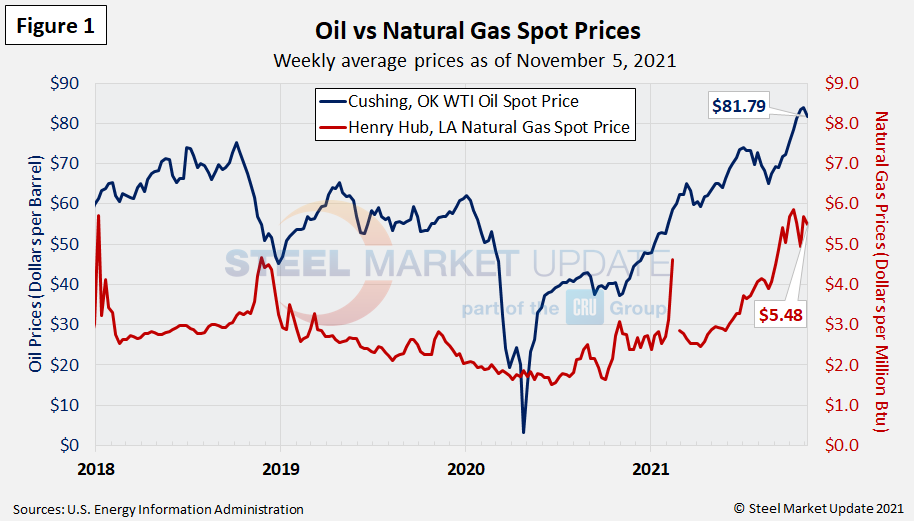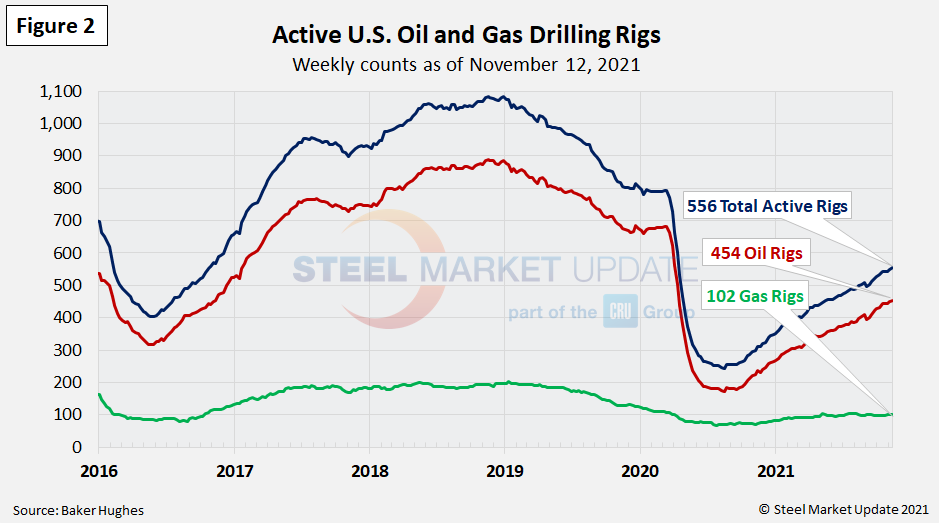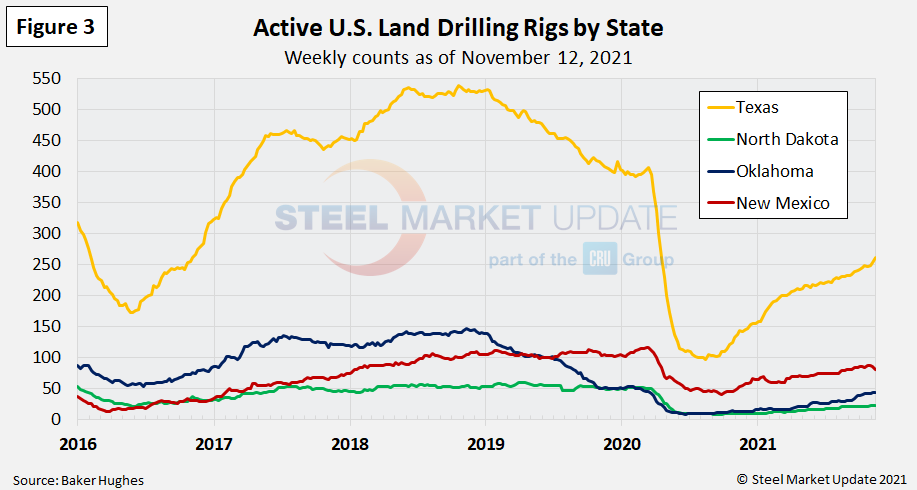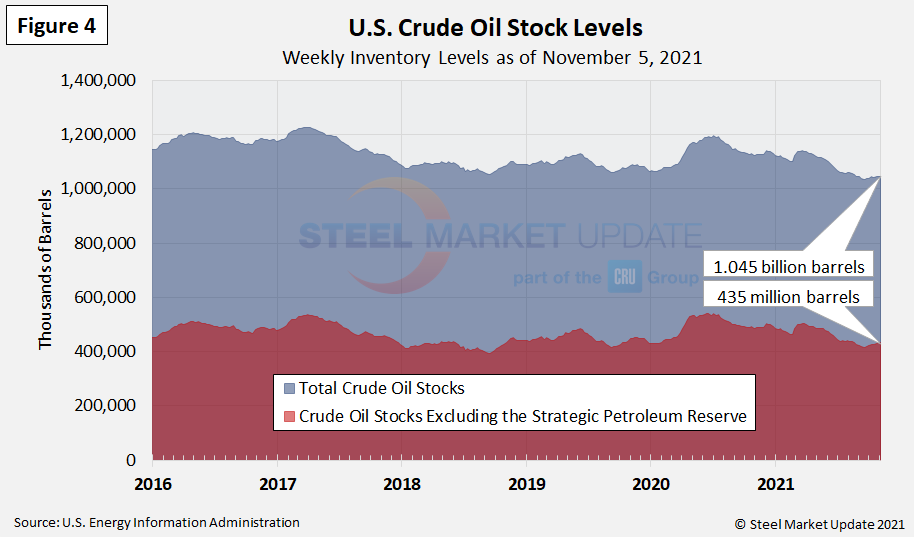Environment and Energy

Energy Market Analysis through November
Written by Brett Linton
November 15, 2021
The Energy Information Administration’s November Short-Term Energy Outlook (STEO) forecasts oil prices to remain near current levels throughout the year, while natural gas prices could experience volatility as winter temperatures drive demand and prices. The EIA notes that evolving effects of consumer behavior on energy demand present a wide range of potential outcomes for energy consumption.
Spot Prices
The spot market price for West Texas Intermediate (WTI) was at $81.79 per barrel as of Nov. 5. One week prior the spot price reached $83.84, the highest weekly price since October 2014 when it hit $87.63. Natural gas prices have slightly declined from the recent highs, now at $5.48 per MMBTU (million British Thermal Units) as of Nov. 5. In early-October, natural gas spot prices reached a 7.5-year high, peaking at $5.87 per MMBTU (we are excluding the high spot-prices seen in February 2021 due to winter storms and supply scarcity). Figure 1 shows the weekly average spot prices for each product. The EIA now expects crude oil spot prices to average $82 per barrel during fourth-quarter 2021 (up $1 from their October forecast) and natural gas spot prices to average $5.53 per MMBtu over the next four months (down $0.27 from the previous forecast).

Rig Counts
The number of active U.S. oil and gas drill rigs continues to slowly recover from the mid-2020 low. The latest count was 556 active drill rigs as of the end of last week, according to Baker Hughes, comprised of 454 oil rigs and 102 gas rigs (Figure 2). While up over recent months, active drill rigs are still down 30% from the 793 count in March 2020, just prior to the coronavirus shutdowns. EIA expects rig counts to increase into 2022 as tight oil production rises in the U.S. The table below compares the current U.S., Canadian and international rig counts to historical levels.


U.S. oil and gas production are heavily concentrated in Texas, Oklahoma, North Dakota and New Mexico. Production is still down as much as 55% compared to levels in March of last year. The most active state, Texas, now has 262 rigs in operation, the highest level seen since April 9, 2020. Recall that in just five months last year, Texas rigs had plummeted 76%, falling from 407 in March 2020 to 97 rigs in August 2020 (Figure 3).

Stock Levels
U.S. total crude oil stocks have steadily declined from the July 2020 high, reaching a multi-year low 1.034 million barrels in September 2021. The latest level is flat in comparison to the previous Energy Update; 1.045 billion barrels as of Nov. 5, down from 1.127 billion barrels at the same time last year (Figure 4).

Trends in energy prices and rig counts are a predictor of demand for oil country tubular goods (OCTG), line pipe and other steel products.
By Brett Linton, Brett@SteelMarketUpdate.com

Brett Linton
Read more from Brett LintonLatest in Environment and Energy

GSCC: Steel decarbonizing for a more sustainable future
Steel is a foundation of the global economy. It is an essential raw material for nearly every industry, from automotive and construction to transportation, machinery, and energy.

DOE transformer rule to benefit Cliffs’ electrical steel
The US Department of Energy has finalized Congressionally mandated energy-efficiency standards for transformers.

SMA: US steelmakers deserve credit for leading decarbonization charge
When it comes to finding ways to reduce emissions in steel manufacturing, we are in the all-of-the-above camp.

AISI explains new PM2.5 air-quality regulation’s impact on steel
The US already had strict regulations on air-quality standards for particulate matter, but they are going to get even tighter.

Stricter EPA air-quality standards could hit steel
The US Environmental Protection has announced more stringent air quality standards that could impact domestic steel producers.
